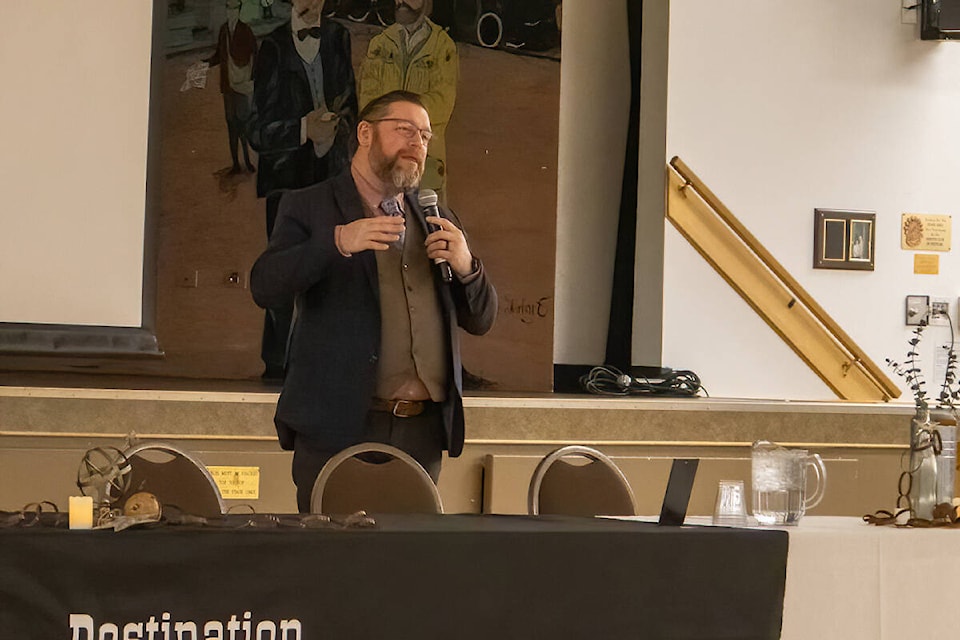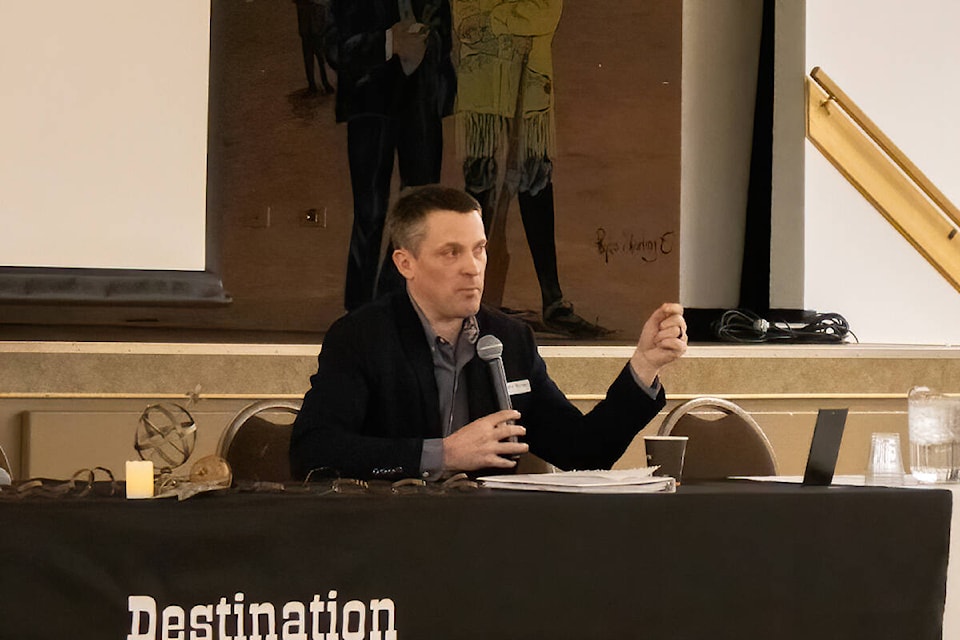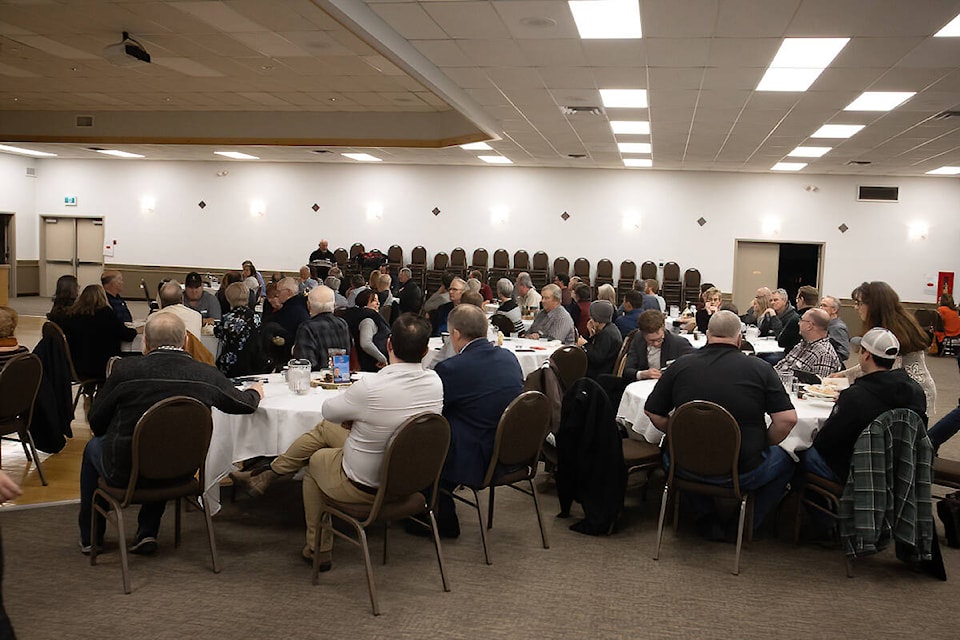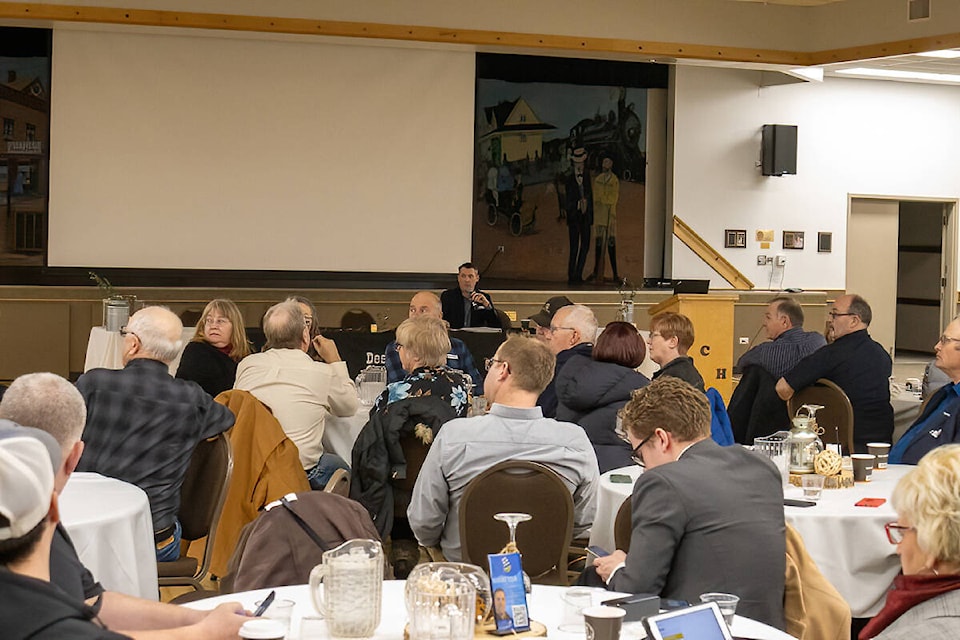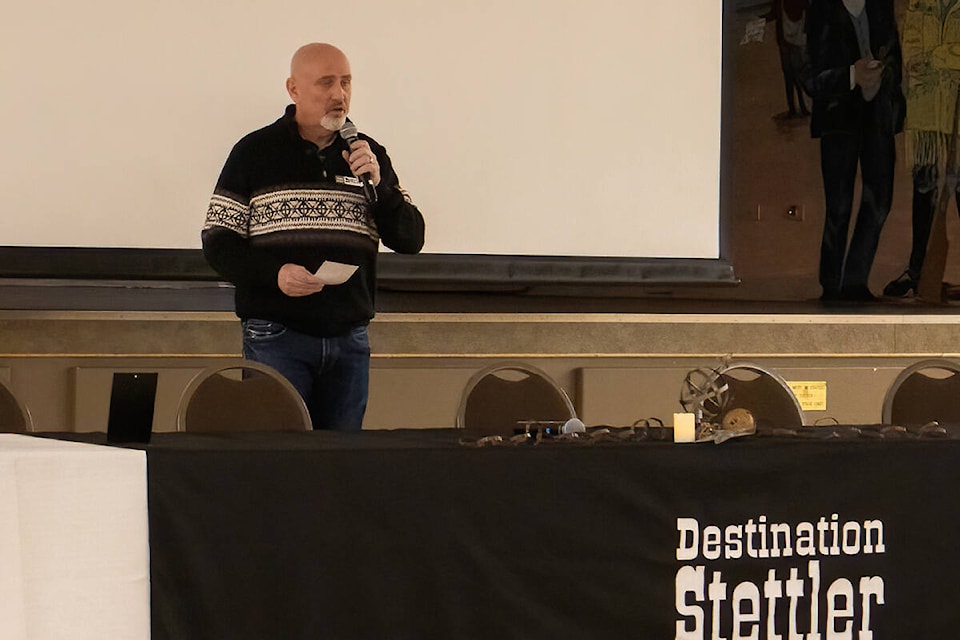Drumheller-Stettler MLA and Alberta’s Minister of Finance, Nate Horner, was in town on March 7 for a budget luncheon at the Stettler Community Hall.
The luncheon was one of several stops, including Calgary and Lethbridge, the veteran MLA made around the province to promote the 2024 provincial budget which was released on Feb. 29.
Hosted by the Stettler Regional Board of Trade, around 80 people were in attendance to hear what Horner had to say, including many elected officials from the town and county of Stettler, the Town of Castor and Paintearth County. One individual had even made the drive south from Amisk.
Following a roast-beef lunch, Horner took his place at the front of the room to begin the discussion on what he called a “tight budget”
Horner noted that the budget was balanced with an approximately $367 million surplus, mainly due to the drop in oil prices.
According to Horner, a $1 drop in the price of oil reduces the province’s revenue from royalties by around 660 million.
“Ten days before (the budget), I thought the surplus was going to be $200 million higher,” said Horner.
As is, the 2024 budget is projecting revenues and expenses of approximately $73 billion, an increase of 3.9 per cent over the 2023 budget.
The area of biggest expense, sitting around 60 per cent of the overall budget, is the combined categories of health and education, which saw an increase of 4.4 per cent.
“That’s defensible,” said Horner, noting that school enrollments and physician compensation were two of the major drivers necessitating increases.
Another area seeing an increase is Forests and Parks, according to Horner.
Due to the significant fire season in 2023 and an already anticipated drought in 2024, Horner says the province is starting the fire season earlier and investing in drone technology for fire monitoring with an eye toward “cost-savings in the long run.”
Additionally, the province has also started the process of upgrading its fleet of water bombers.
The province’s capital plan is $2 billion in 2024 and a total of $25 billion over the next three years.
“We want to signal the construction industry that they can stay ramped up,” said Horner.
Horner also discussed capital projects that are announced but subsequently pushed further and further into the future, a symptom of the province’s current procurement policy.
One example used was the now-cancelled South Edmonton Hospital.
According to Horner, if the province had proceeded with that project it would have ultimately ended up being the “most expensive” hospital ever built in North America due to its continual delays and cost escalations.
“The process keeps kicking it back,” said Horner.
“We need a standardized system.”
Horner says that the province is currently investigating ways to make the procurement system more streamlined.
Another major focus of the budget meeting was the Heritage Fund.
According to Horner, the fund has increased to $25 billion since the governing United Conservative Party took power five years ago and plans are underway to revitalize the fund over the next several years, including a $2 billion payment in 2024.
“The intent is to change it in a big way,” said Horner.
“We want to create something future Albertans can use to replace oil revenues.”
Horner noted that the province’s debt has also dropped to $76.1 billion in 2024, down from a high of $93 billion, though he noted that with new spending, the forecast sees that number jumping back up to $78.1 billion by 2025.
When it came to the campaigned on income tax cut, Horner reiterated that the plan remains for it to be legislated in 2025, and have it introduced in 2026 with full implementation in 2027.
“I could see in October it couldn’t happen,” said Horner.
Horner did note that the province continues to have an approximately $19 billion tax advantage over any other jurisdiction in the country.
When asked By Stettler Mayor Sean Nolls about funding for municipalities and the recommended $1.7 billion recommended for the Local Government Fiscal Framework (LGFF) by Alberta Municipalities, and that municipalities are being told they are not spending enough on infrastructure, Horner noted that municipalities aren’t even “on the shortlist” where it came to funding.
“If you think you’re going to get $1.7 billion, it’s not in the cards,” said Horner.
The province has committed to $722 million for the LGFF, to be split amongst all municipalities that apply, in 2024.
Castor Mayor Richard Elhard noted that municipalities do have the ability to pay for infrastructure work through taxation.
“We sometimes have to look at that a little harder than we usually do,” said Elhard.
Horner agreed with Elhard, noting that when creating the budget, his department looked at striking a balance and that, ultimately, “Those able to pay for things should.”
In total, the budget luncheon lasted a little over two-and-a-half hours.
